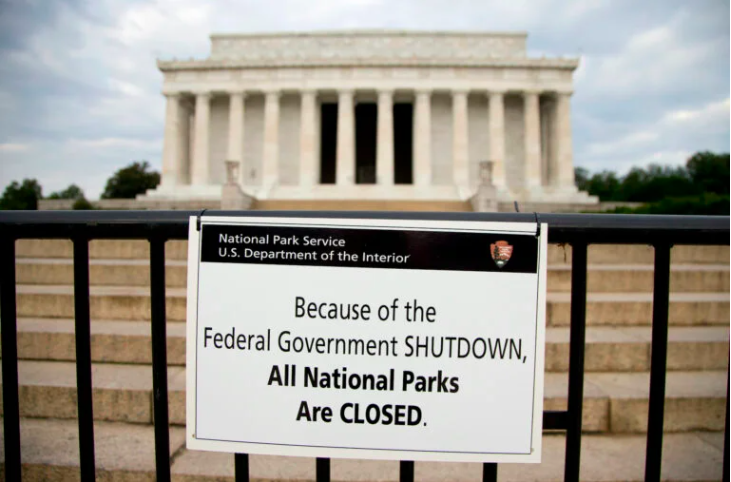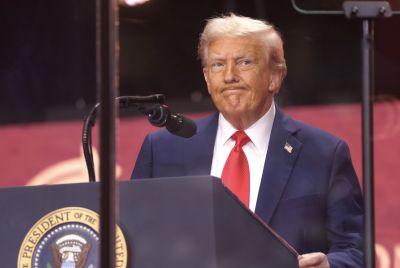Are National Parks Closed? Sites Are Staying 'Mostly Open' With 'Skeleton Crews' During US Government Shutdown
.

America's famed national parks are facing an uneasy autumn as the federal government shutdown leaves them operating with skeleton staff and minimal services.
While most sites remain accessible, the absence of rangers and closed visitor centres are creating risks for both visitors and the landscapes themselves. Conservationists warn the current policy could prove reckless, recalling past shutdowns where vandalism and damage spiralled unchecked.
Staff Furloughs Leave Parks Barely Manned
According to the National Park Service contingency plan, around 9,200 of its 14,500 staff (about two-thirds of its workforce) have been furloughed since the shutdown began on 1 October.
This has left visitor centres, museums, gift shops, and other indoor facilities closed. Open-air areas, such as trails, memorials, and scenic roads, remain accessible, though with far fewer staff to monitor them. In many cases, entrance booths are unmanned, and visitors are allowed through without paying fees.
What Visitors Are Experiencing
At Yosemite National Park in California, campgrounds and trails are open, but the welcome centre is shut.
In Philadelphia, the famous Liberty Bell Pavilion has closed entirely, even as the surrounding grounds remain open, according to the Associated Press.
For families and tourists, the experience can be unsettling. Some find toilets locked, bins uncollected and staff absent.
Others, like hikers in Acadia or Carlsbad Caverns, discover that rangers are not available to provide guidance. 'People show up expecting a ranger to be there, but the reality is that the ranger may not be,' the Guardian noted.
Echoes of Past Shutdowns
The decision to keep parks open by tapping into fee revenues echoes the approach taken during the 2018–19 shutdown under Donald Trump.
At the time, the Government Accountability Office later ruled that the practice was unlawful.
Critics warn that risks remain. During the previous shutdown, visitors caused severe damage—Joshua trees were cut down, vehicles drove into protected desert areas, and rubbish piled up without collection.
Some parks had to close mid-shutdown as conditions worsened.
Conservationists Call for Closures
The National Parks Conservation Association argues that 'skeleton crews' cannot prevent vandalism, resource damage or accidents, and has called for a full closure of sites during shutdowns.
The Centre for Biological Diversity went further, calling the current policy 'reckless.' It said understaffed parks risk both visitor safety and environmental destruction, citing the history of damage from earlier shutdowns.
States Step In to Fill the Gap
Some states are stepping in to protect their tourism economies. According to Axios, Utah has pledged support to keep Zion, Arches and Bryce Canyon running.
Arizona has previously funded the Grand Canyon's operation with state tourism funds, while New York used state money to ensure the Statue of Liberty remained open.
But not every state has the budget to intervene, leaving many communities anxious about losing visitor income.
Local Economies at Risk
The uncertainty is not just about access to nature. National parks are lifelines for small towns that rely on steady streams of visitors.
Restaurants, hotels and local shops all depend heavily on park tourism.
'If the parks shut completely, our business shuts too,' one innkeeper in Maine told local media, reflecting the unease shared by many in communities near park sites.
Travellers Urged to Prepare
The San Francisco Chronicle reported that the National Park Service has stopped updating websites and social media, making it harder for visitors to find reliable information.
Officials warned that if conditions become unsafe, individual areas or entire parks may close at short notice. Tourists are advised to bring extra supplies, expect fewer services, and check local alerts before travelling.
A Fragile Balancing Act
The shutdown has reignited the debate over whether public access should take precedence over environmental protection during periods of political gridlock.
For now, America's parks remain technically open, but the visitor experience—lacking rangers, services and safety oversight—is a shadow of the full national park promise.
© Copyright IBTimes 2025. All rights reserved.



















